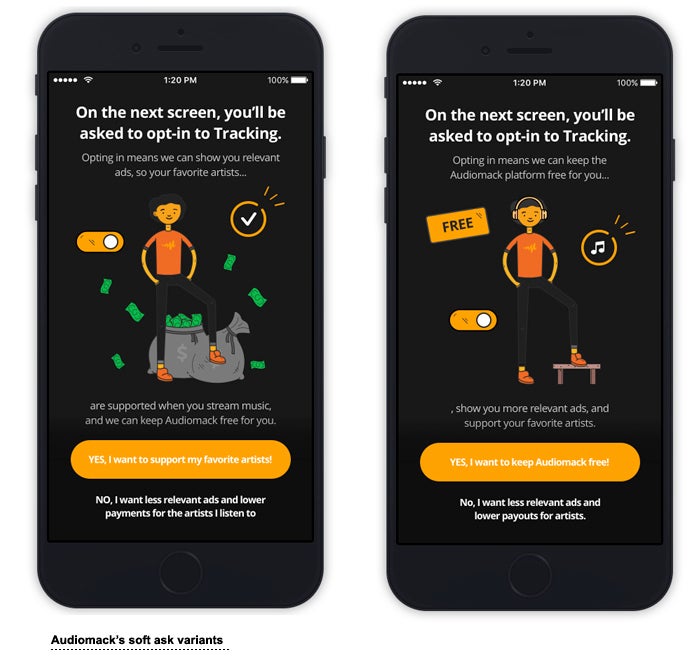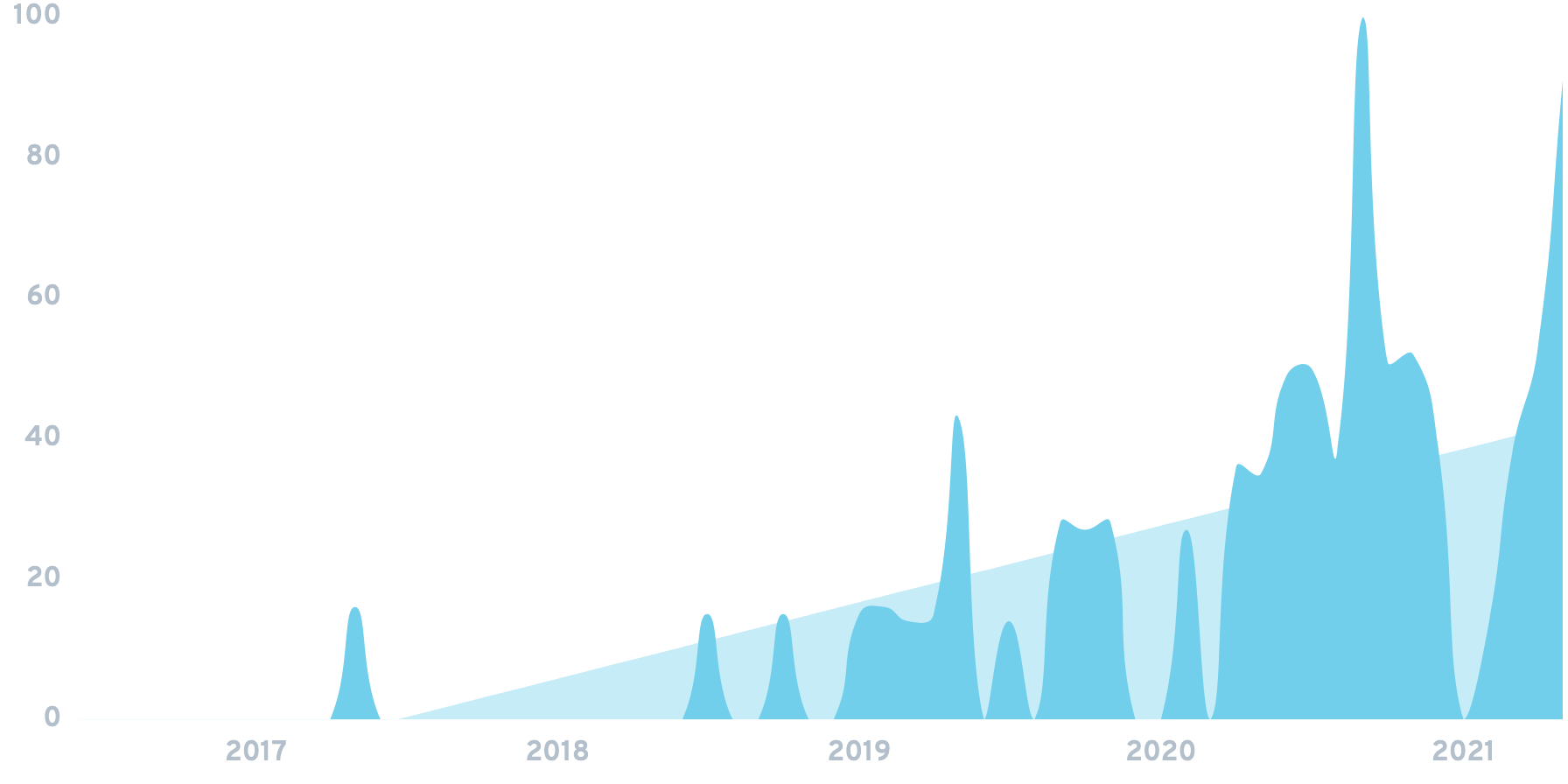What's New: Instagram's new affiliate tool
(from the latest issue of the Indie Hackers newsletter)
The new feature is currently available to select creators on the platform:
- Instagram is making it easier for founders and influencers to work together more seamlessly. The new tool takes the guesswork out of influencer marketing.
- Yearly plastic trash flow into the ocean will triple by 2040, according to National Geographic. Wheat straw is gaining popularity as the perfect eco-friendly alternative to plastic consumer products, creating new opportunities for founders.
- Founder Sam Parr grew The Hustle to over 1.5 million subscribers. His top tip for media creatives? Copywriting is the number one skill you need if you want to make money.
Want to share something with nearly 80,000 indie hackers? Submit a section for us to include in a future newsletter. —Channing
🤩 Instagram's New Affiliate Tool

from the Growth & Acquisition Channels newsletter by Darko
Instagram's affiliate tool has launched, and is available to a select number of creators on the platform. This tool aims to make it easier for founders and influencers to work together more seamlessly.
Instagram affiliates
Instagram recently announced the addition of an affiliate tool to its platform, designed to allow creators to be rewarded for the purchases they drive.
How it works: When Instagram users come across an affiliate post from a creator featuring a tagged product, they will see “eligible for commission” at the top of the post. This makes it clear that their purchases help support that creator.
For now, this is available only to select US influencers and businesses, including Benefit, MAC, Pat McGrath Labs, and Sephora. The program is expected to expand very soon.
The opportunity: Influencer marketing is about to get much easier. Currently, if you want to promote a product through an influencer, you'll need to negotiate fixed fees or pay per post. This new program will hopefully make things much easier. It is designed to take the uncertainty out of the process for both founders and influencers.
Facebook convenience
Facebook's newest report found that convenience is the top factor that influences online purchases in markets like Hong Kong and Taiwan.
Here are the other factors:

The opportunity: This particular report focused solely on e-commerce. Here's how Facebook defines convenience:
In Hong Kong, fuss-free checkout is a basic requirement. One in three will abandon their carts if checkout involves too many steps, while another one in three expects the payment authentication process to be fast and require no action from them.
If you have a digital product (SaaS/service), then you need to pay even more attention to this. For SaaS, your whole product defines how convenient it is, unlike with e-commerce where it's just the listing, shopping cart, and payment.
Audiomack and ad tracking
Audiomack is a very popular artist-first music streaming app in the App Store that allows users to download and stream music. In a recent article, the company outlined how it was able to get 64% of its users to agree to Apple's new ATT tracking.
Loss aversion: Audiomack tested two types of messages. One showed users what they could gain, and the other showed them what they could lose:

The clear winner: The message on the right was more effective. This one showed users what they would lose, and loss aversion is a powerful thing.
What can we learn from this: When's the last time you told people what they could lose, rather than gain, when promoting your product? Loss aversion is a pretty powerful motivator, as you can see. It's something definitely worth testing in your copywriting.
What do you think of Instagram adding an affiliate program? Share in the comments.
Discuss this story, or subscribe to Growth & Acquisition Channels for more.
📰 In the News

from the Volv newsletter by Priyanka Vazirani
💎 Sotheby's will accept cryptocurrency as payment for a 101-carat diamond.
📵 The UN claims that India's digital rules violate human rights norms.
💻 Several major US companies are not accepting remote workers from Colorado.
🗑 Amazon reportedly destroys millions of unsold products each year.
🎧 Facebook's Clubhouse competitor has launched in the US.
Check out Volv for more 9-second news digests.
🌾 Wheat Straw Products Aren't So Dry After All

from the Exploding Topics newsletter by Josh Howarth
Searches for wheat straw plates, and other similar goods, have increased in the past year. With increased consumer demand for more eco-friendly items, wheat straw could be the next big thing for founders.
Wheat straw plates
Wheat straw is a byproduct of wheat grain production, often destroyed in many parts of the world. But this byproduct is increasingly being used as a premium food grade material.

Once broken down with bacteria and mixed with sugar, the material has several properties that make it ideal for modern-day consumer products. Wheat straw is biodegradable, microwave and freezer safe, lightweight, sturdy, and FDA-approved.
Wheat straw plates are gaining popularity as the perfect eco-friendly alternative to plastic plates and utensils.
What’s next: Wheat straw plates are a part of the "plastic alternatives" meta trend. According to National Geographic, plastic trash flow into the ocean every year is forecast to triple by 2040. It’s a big problem that continues to gets worse.
Statista reports that 57% of Gen Z'ers in the US prefer to purchase environmentally sustainable products. And consumer goods company Unilever has found that its most eco-friendly brands have grown 46% faster than its other products.
Other fast growing products in the meta trend include bamboo cutlery, silicone straws, and beeswax wrap.
The opportunity: With the rise of wheat straw plates, bamboo goods, and everything in between, brands need eco-friendly packaging for their consumer offerings. Design, manufacturing, and distribution of this packaging is a rising field. Founders can also explore opportunities in the wheat straw manufacturing space, breaking down the materials for conversion into kitchen items.
Corporate and employee gifts are another space that founders should consider. Gift cards, packages, and gift boxes incorporating wheat straw products will likely continue to increase in popularity. Finally, home office products are on the rise as well, with consumers searching for "wheat straw charging pads" and "wheat straw bluetooth speakers."
With this being a newer product field, reviews are important. Reviewing wheat straw products on YouTube, or creating an app or platform that compiles reviews for specific eco-friendly products are also opportunities to explore.
Check out the full post to see this week's other three exploding topics.
And join Exploding Topics Pro to see trends 6+ months before they take off.
What do you think of wheat straw product production? Please share in the comments!
Discuss this story, or subscribe to Exploding Topics for more.
🧠 Harry's Growth Tip

from the Marketing Examples newsletter by Harry Dry
Most people barrel ahead with an idea, and only realize there's no "hook" when it's too late. Try figuring out your headline at the start.
Then, work backwards until it becomes reality.

Go here for more short, sweet, practical marketing tips.
Discuss this story, or subscribe to Marketing Examples for more.
📧 Founder Sam Parr Grew The Hustle to 1.5M+ Subscribers

from the Listen Up! IH newsletter by Ayush Chaturvedi
Sam Parr is the founder of The Hustle, a tech and business-focused daily newsletter with over 1.5M subscribers.
He is also the creator of Hustlecon, a networking conference for startups, and Trends, the first paid product from The Hustle. Trends is a weekly newsletter and community geared towards sharing business trends and ideas.
Hubspot recently acquired The Hustle for an undisclosed amount; Axios valued the startup at around $27M. Sam sat down with Indie Hackers to share more about his journey!
Core skills
Sam drew upon three essential skills to build The Hustle:
-
Writing: This is a skill that Sam built by practicing continuously for almost a decade. To him, writing is a lot like music. You start at a very basic level, but with relentless practice, you get better. And when you produce a masterpiece, people think you are naturally talented.
In the initial days of The Hustle, Sam wrote a ton of great content that drove a massive amount of traffic on the site. Nearly 500K people visited the site in its first month of business.
-
Tech: Although Sam doesn't code, he has been around enough tech founders enough to pick up a thing or two on how tech businesses operate. He doesn't consider The Hustle to be a traditional media business, calling it a media and tech business instead. Sam believes that traditional media companies consider their readers to be just numbers on a graph, and they focus solely on increasing those numbers.
Conversely, The Hustle focuses on individual subscribers. It considers the pains, desires, and aspirations of its audience, and designs products accordingly. For instance, the daily newsletter includes a "snippets" section, which each subscriber can customize to their own liking. They can choose the topics they care to receive news about every day. While this customization is a common feature in tech products, it is not common in media products. This is one aspect that set The Hustle apart and helped drive traffic from the beginning.
-
Internet marketing: Sam is a master of traditional internet sales tactics, specifically when it comes writing long-form sales pages. These sales pages convert better than simple landing pages. Most people create simple landing pages that simply describe the product, but those aren't as persuasive. Sales pages have long copy, images, and videos created for the purpose of making a sale.
Sam's copywriting crash course
Great copywriters understanding human behavior, and can hone in on people’s wants and needs, leading them to purchase your product or service. Sam recommends Advertising Secrets of the Written Word to copywriting beginners.
Good copywriting tends to follow the AIDA formula:
- Attention: Grab the attention of the reader.
- Interest: Give them facts to create interest.
- Desire: Tell them stories to foster desire. Share features and benefits.
- Action: Lay out the specific action that you want the reader to take.
How to start a media business today
If you want to start a media business from scratch, take note of what's working already. Before starting The Hustle, Sam spoke to many major media publications, including The Motley Fool, The New York Times, and The Wall Street Journal. He asked them a host of questions about what was working:
To me, business is like writing songs, where there’s a handful of chord structures that just work. Most pop songs are around 80-100 bpm. They have a chorus, a bridge, and best practices. Within those best practices, I can make my art. That’s how I view it.
Tips on starting a media business:
- Pick a small, fast-growing niche.
- Know exactly who you are targeting.
- Know who you are not targeting.
- Make content that helps someone make money. That way they can justify the cost.
- Love what you are doing.
To monetize a content business, subscriptions are better than advertisements or sponsors because they give you full creative control over the product.
Check out the full interview on the Indie Hackers Podcast here.
Discuss this story, or subscribe to Listen Up! IH for more.
🐦 The Tweetmaster's Pick

I post the tweets indie hackers share the most. Here's today's pick:
🏁 Enjoy This Newsletter?
Forward it to a friend, and let them know they can subscribe here.
Also, you can submit a section for us to include in a future newsletter.
Special thanks to Jay Avery for editing this issue, to Nathalie Zwimpfer for the illustrations, and to Darko, Priyanka Vazirani, Josh Howarth, Harry Dry, and Ayush Chaturvedi for contributing posts. —Channing

